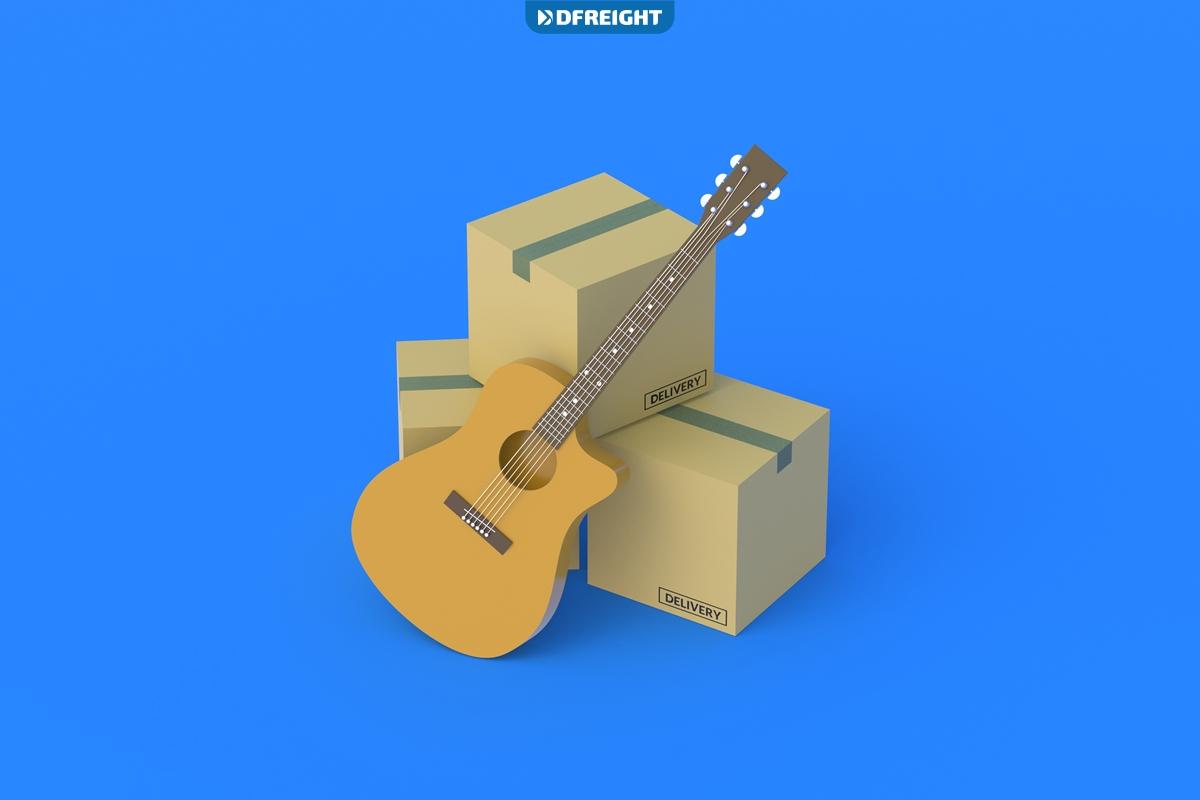Shipping musical instruments is a delicate and expensive field that requires special care. If you’re looking to ship a musical instrument, you’ve come to the right place! This blog post will cover everything you need to know to get your instrument safely to its destination. We’ll start with an overview of the different shipping options available, then dive into how to pack and ship your instrument. By the time you’re finished reading, you’ll be an expert on shipping musical instruments!
Table of Contents
Shipping Musical Instruments
When shipping musical instruments, there are a few things to remember. There are numerous methods for shipping musical instruments, and the best approach will vary depending on the type of instrument, the distance it is being sent, and the budget of the person transporting it. The most important thing is to use a method to protect the instrument from damage during shipping. One option is to use a shipping company specializing in musical instruments. These companies will have the necessary packaging and insurance to ensure your instrument arrives safely.
Another option is to pack the instrument yourself using materials such as bubble wrap and packing peanuts. This can be a cheaper option, but ensuring the instrument is securely packed is essential to avoid damage. Shipping musical instruments can be a bit of a hassle, but it is crucial to take the time to find the best shipping method to ensure your instrument arrives safely. Keeping these things in mind can help ensure that your instrument arrives safely and on time.
Packing in Shipping Musical Instrument
Shipping musical instruments can be a difficult and costly operation. Proper packaging is essential to ensure that your instruments arrive safely and undamaged. There are a few things to remember when packing musical instruments for shipping. First, using a sturdy box slightly larger than the instrument itself is vital. This will provide extra protection if the container is dropped or bumped during shipping. Second, be sure to pad the inside of the box with soft materials such as bubble wrap or foam. This will help to prevent the instrument from being damaged by shifting during transit.
Third, it is essential to secure the instrument inside the box. This can be done using straps or wrapping the instrument in a thick blanket. Doing this will help to prevent the instrument from moving around inside the box and becoming damaged. Fourth, when shipping musical instruments, it is essential to insure the package. This will protect you if the instrument is lost or damaged during shipping. Be sure to get a tracking number for the box so you can track its progress.
Following these tips will help to ensure that your musical instruments arrive safely at their destination. With proper packaging, you can rest assured that your instruments will make it through the shipping.
How Do I Ship Various Musical Instruments?
Different musical instruments require different amounts of packaging and shipping care, depending on the size of the instrument and how delicate it is. For example, shipping a fragile string instrument like a violin requires different packaging and shipping precautions than sending a less delicate instrument like a trumpet. Here are some general tips on how to ship other musical instruments:
- Instrument cases should be padded with soft materials like bubble wrap or foam to prevent damage during shipping.
- Instruments should be placed in sturdy boxes slightly larger than the instrument to allow for padding.
- For larger instruments, it may be necessary to use multiple boxes or a crate for shipping.
- When shipping an instrument internationally, it is vital to research the destination country’s customs regulations to ensure that the instrument can be shipped without any problems.
- In case of damage or loss, it is always a good idea to have insurance in musical instrument shipping.
By following these tips, you can be sure that your musical instrument will arrive at its destination safely and in good condition.
Air or Ocean?
There are a few things to consider when shipping musical instruments via air or ocean freight (Read the blog post that thoroughly compares these two strategies from Here). The most crucial factor is the type of shipping musical instrument. Air freight is typically more expensive than ocean freight but also faster. If time is not a factor, ocean freight may be the more economical. Air freight is the best option for shipping percussion instruments since they are sensitive to changes in temperature and humidity. String instruments are also best shipped via air freight, as they are delicate and can be damaged by changes in temperature and humidity.
Woodwind instruments can be shipped via air or ocean freight, but air freight is generally recommended to avoid damage from changes in humidity. Shipping costs will also vary depending on the instrument’s size and weight. Oversized cargo in air freight is typically charged by the pound, while ocean freight is generally set by cubic foot. It is essential to compare the rates of different shipping companies to get the best deal.
The packaging used to ship the instrument is also important. Instruments must be well-padded and protected from the elements to avoid damage in transit. Air freight generally provides more protection than ocean freight, but this will also depend on the quality of the packaging. Ultimately, the best way to ship a musical instrument will depend on the type of instrument, the time frame, and the budget. Air freight is generally the best option for shipping percussion and string instruments, while ocean freight may be more economical for shipping woodwind instruments. It is vital to compare shipping rates and packaging options to find the best solution for each shipment.
Tips for Shipping Musical Instruments
- Research the best shipping method for your instrument.
- Determine the dimensions and weight of your instrument.
- Get quotes from different shipping companies.
- Choose the shipping company that offers your instrument’s best price and shipping method.
- Pack your instrument correctly for shipping.
- Label your instrument with the appropriate shipping information.
- Ship your instrument and track its progress.
Receive your instrument and enjoy playing it!
Trust DFreight to Ship Your Musical Instruments Safely
By following the tips in this blog post, you can ensure that your musical instrument will arrive safely and in good condition by handling the packaging and shipping processes. You can trust DFreight to get the job done right when shipping musical instruments. We know how to package and ship musical instruments so they arrive safely at their destination, and we always ensure the safety of your instrument in case of damage or loss. So if you need to ship a musical instrument, contact us; we’ll ensure your instrument arrives safely and on time.
FAQs
What is the best way to ship a musical instrument?
The best way to ship a musical instrument is to use a shipping service that offers insurance.
What do I do if my musical instrument is damaged during shipping?
If your musical instrument is damaged during shipping, you should file a claim with the shipping company.
How do I file a claim for a damaged musical instrument?
To file a claim for a damaged musical instrument, you must provide the shipping company with proof of damage.
How do I track a musical instrument shipment?
You can track a musical instrument shipment by using the tracking number provided by the shipping company.














